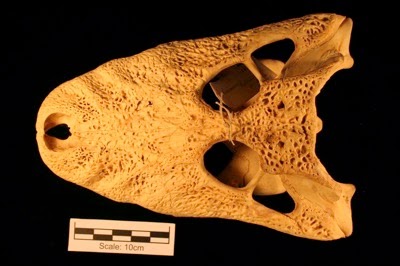Text mining for museum specimen identifiers #TDM http://t.co/BsFXSAZJpK cc @rdmpage @robgural thoughts?
— Ross Mounce (@rmounce) May 19, 2015 This post is a response to Ross Mounce's post Text mining for museum specimen identifiers. As Ross notes in that post, mining literature for specimen codes is something I've been interested in for a while (search for specimen codes on iPhylo), and @Aime Rankin (formerly an undergraduate student at Glasgow) did some work on this as well. It's great to see progress in this area.
This post is a response to Ross Mounce's post Text mining for museum specimen identifiers. As Ross notes in that post, mining literature for specimen codes is something I've been interested in for a while (search for specimen codes on iPhylo), and @Aime Rankin (formerly an undergraduate student at Glasgow) did some work on this as well. It's great to see progress in this area.
Here are some thoughts on Ross's post (I'm posting here rather than as a comment on Ross's blog because this is going to be long).
What questions to ask?
Obviously there's a lot of scope for metrics, such as numbers of citations for individual specimens, and league tables for collections (see GBIF specimens in BioStor: who are the top ten museums with citable specimens?). As Ross notes, there's also scope for updating out of date museum metadata with information from the literature (e.g., Linking data from the NHM portal with content in BHL), but even more interesting is the potential to cross-link databases in a way that permits novel queries. For example, if we have a paper on a disease that includes data we can link to a georeferenced specimen, then we can enable spatial queries for diseases (e.g., BHL and GBIF as biomedical databases).Materials for mining
From my perspective the obvious corpus to mine is the Biodiversity Heritage Library (BHL). Ross repeats the erroneous view that BHL is just "legacy" literature. Apart from the obvious point that everything not published right not is, by definition, legacy, BHL has a lot of modern content (including papers published in the last couple of years).Furthermore, there are journals that cite Natural History Museum specimens, including "in house" journals (e.g., Bulletin of the British Museum (Natural History) Zoology and Bulletin of the Natural History Museum. Zoology series), as well as the Bulletin of the British Ornithologists' Club which has published lots of new bird names for which the type specimen is often in the NHM.
I guess one issue is accessibility. Ross notes that:
The PMC OA subset is fantastic & really facilitates this kind of research – I wish ALL of the biodiversity literature was aggregated like (some) of the open access biomedical literature is. You can literally just download a million papers, click, and go do your research. It facilitates rigorous research by allowing full machine access to full texts.So, how we can make BHL content as accessible? For each article I've extracted from BHL and stored in BioStor you can get full text by simply appending ".text" to the BioStor URL, but this isn't quite the same as grabbing a big dump of text.
The other source of mining is GenBank, which has a lot of sequences that have NHM vouchers, but also a weird and wonderful array of ways of recording those specimens. This is one reason I'm building "Material examined", to cope with these codes. For example sequence KF281084 has voucher "TRING 1877111743" which more traditionally would be written as "BMNH 1877.11.17.43", which is "NHMUK 1877.11.17.43" in the NHM database. This is just one example of the horrors of matching specimen codes (for more see the code for Material examined).
One reason GenBank is useful is that the sequences are often linked to the literature, which means you get to make the link between specimen and literature without actually needing to mine the text itself (handy if access is problematic).
Bonus question: How should I publish this annotation data?
But if I wanted to publish something a little better & a little more formal, what kind of RDF vocabulary can I use to describe “occurs in” or “is mentioned in”. What would be the most useful format to publish this data in so that it can be re-used and extended to become part of the biodiversity knowledge graph and have lasting value?Personally I'd avoid RDF because that way lies madness (or at least endless detours haggling about ontologies).
But making the output useful is an important question. Despite the fact that it is a bit clunky, I suspect Darwin Core Archives are the way to go. The core data is a CSV table, so it's easy to generate, and also easy to use. Lets say you analysed a particular corpus (e.g., PLoS ONE), you could then output the data in Darwin Core (making sure both specimen and publication had stable identifiers), then package it up and upload to Zenodo or Figshare and get a DOI. For bonus points, it would be great to see this data on GBIF, but this would require (a) mapping NHM specimen codes to GBIF ids (the NHM has this), and (b) GBIF being able to recognise that the data you're adding is not new specimens but rather annotations of existing specimens.
Things to think about
Here are a couple of additional things to think about.